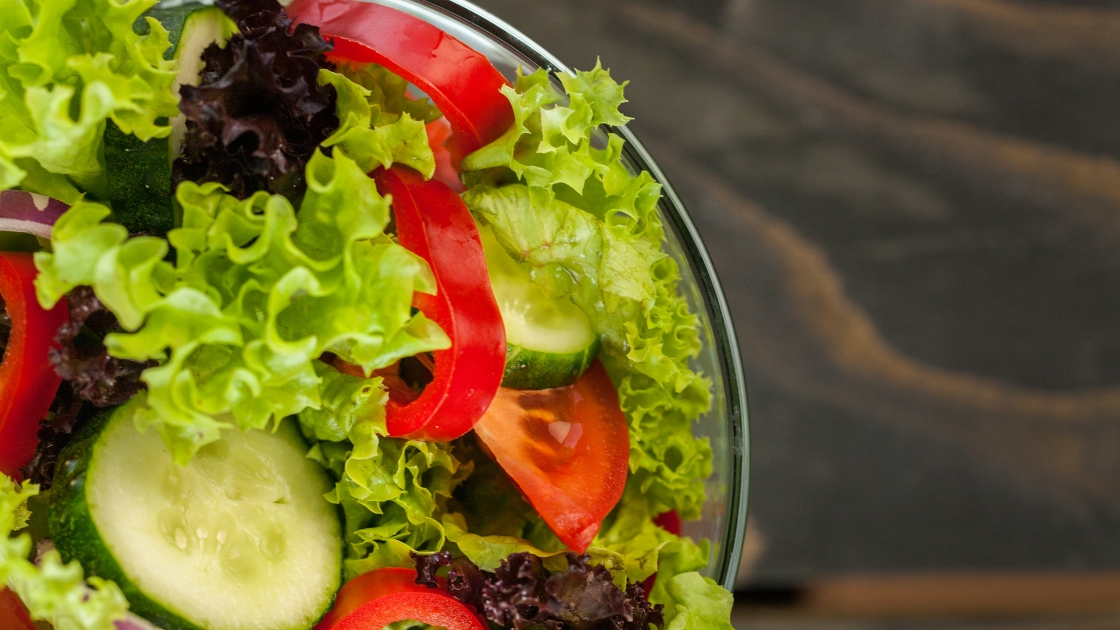Diet gurus, talking heads on TV, government food pyramids, and your friend who lost 20 pounds…
What do they all have in common? They all know the perfect diet that will whip you into shape and make you feel good.
If that diet doesn’t work for you? Well, you must have been cheating. You didn’t eat clean enough. You didn’t stick it out through the ‘keto flu’ long enough….
It must be all your fault that you are failing on their perfect diet.
Or is it? We all accept and embrace our differences when it comes to skin color, hair color, etc — different phenotypes based on our gene expression. It is time for everyone to realize that we are all different when it comes to diet and weight loss as well.
The Very Basics
I’m assuming that most people reading this already have the basics in place: eating healthy food, organic when possible, and not smoking or drinking alcohol in excess. If you are eating a PopTart for breakfast and washing it down with Mountain Dew, well… back up and start off by getting rid of the processed junk food.
Why get rid of junk food? I think most of us have a sense that the preservatives, additives, colorings, and unrecognizable words on the ingredients list are probably not all that healthy. One thing that you may not have considered, though, is the impact of emulsifiers and surfactants in foods. Recent studies have looked at the effects of some substances, such as cellulose and polysorbate 80, which are used as emulsifiers to change the texture of foods. They found that these food additives, which are considered safe by the FDA, change the mucosal barrier in the intestines, allowing bacteria closer contact with the surface of our intestinal cells, leading to irritation/ inflammation. This leads to weight gain without increased food intake, and for some, an increased risk of IBD. Read through the following article to check to see if your genes put you at a higher risk for having problems with emulsifiers in foods: Microbiome Microbiome + Genetics + Emulsifiers = Obesity
Building the platform for good health
Most people want to lose weight to ‘get healthy’. We are inundated with stories on the horrible health consequences of being overweight, accompanied by photos of protruding bellies and people eating giant burgers. Being overweight causes cancer, diabetes, heart attacks… and well, it is just generally loathed because fat people are smelly slobs with no common sense or self-control. Right? Well, maybe not. For example, read up on the ‘obesity paradox’, where large studies (~250,000 people) have shown that mortality rates are lower for those who are overweight. It is a U shaped curve for mortality after heart attacks, where those who are overweight are least likely to die and those who are underweight or morbidly obese being at the highest risk for death.[study]
Perhaps we are all looking at weight loss backward. Instead of losing weight to get healthy, we should get healthy and then naturally lose weight. We can look at being overweight or obese as a symptom of the wrong diet and lifestyle for our genes, with finding our own genetically correct diet and lifestyle as the way to get healthy first.
Circadian Foundation
Fundamental to health for everyone is good sleep and a healthy circadian rhythm.
Don’t stop reading here! Even if you are thinking, “I sleep ok”, please read on.
Circadian rhythms — biological activities tied to the 24-hour cycle of light and dark — are something that we all recognize in animals and plants. We all know that there are nocturnal animals and insects, and we’ve all seen the cool time-lapse videos of flowers opening in the day and closing at night. But somehow it seems to escape us that circadian rhythms, fundamental to all life forms, apply to humans. They are foundational to our biology and our health.
Thomas Edison invented the lightbulb in the late 1800s, and cities began lighting up at night just over 100 years ago. Prior to that, humans only had light from fire (candle, oil lamps) in the evenings, which emit a yellow/red-shifted light. More recently, color TV’s came into everyone’s living room by the ’80s, computers in the ’90s, and then we all got laptops, smartphones, and tablets in the 2000s. Edison’s incandescent bulb, with its warm yellow light, went by the wayside with the introduction of the CFL bulb and subsequent leap to LED bulbs.
Light at night disrupts our circadian rhythm, which makes sense when you think about it. But the bigger problem came with the TV, computer, cell phones, and CFL/LED bulbs. They all produce a lot of light in the shorter, blue wavelengths (~480 nm), which is the wavelength that signals through receptors in our retina to set our circadian clocks. For thousands of years before electricity, our bodies’ exposure to blue wavelengths came each day when the sun came up in the morning. Now blue wavelengths are inundating us late into the night, making our body think that it is still mornings.
 Before anything else for our health, we need strong circadian rhythms with melatonin onset in the evening when the sun goes down and sunlight hitting our eye in the morning as the sun comes back up.
Before anything else for our health, we need strong circadian rhythms with melatonin onset in the evening when the sun goes down and sunlight hitting our eye in the morning as the sun comes back up.
There is a ton of research coming out about the health effects of messing with our circadian rhythm, and the Nobel Prize was just given for the discovery of the circadian clock genes.
Why am I going on and on about this for a weight loss article? Studies show that low levels of light at night (like from a night light or street lights shining through the window) cause mice to gain fat compared to mice eating the exact same amount of calories but with dark at night. Weight gain due to light at night is backed up by many studies of people working late shifts. Other circadian rhythm disruption consequences include increased risks of cancer, heart disease, and diabetes (yep, same health risk list as above for obesity).
Genetically, some of us are more sensitive to disruptions of circadian rhythms and melatonin production than others. Some people have a doubled risk of diabetes from a melatonin receptor variant, and that risk can be mitigated through the timing of meals and, perhaps, blocking blue light at night. Read through my Melatonin and Circadian Rhythms articles to check your genes for higher susceptibility to circadian disruption: Color TV has made us fat: Melatonin, Genetics, and Light at Night and Circadian Rhythms: Genes at the Core of Our Internal Clocks
Even if you aren’t at a higher risk genetically, blocking blue light in the evening with blue-blocking glasses will benefit everyone from a health standpoint. From all the research studies that I’ve read, the biggest thing that we can do for our health (other than not smoking or excess alcohol) is to get our circadian rhythms on track by blocking blue light for two or three hours before bed, sleeping in the dark, and getting outside in the morning to see the sun.
Matching Your Genes to Current Diet Trends:
 If you are looking at current diet trends to give you some ‘rules’ to follow, you may be reading up on Paleo, ketogenic, intermittent fasting, Mediterranean, vegan, juice fasts, and detox cleanses.
If you are looking at current diet trends to give you some ‘rules’ to follow, you may be reading up on Paleo, ketogenic, intermittent fasting, Mediterranean, vegan, juice fasts, and detox cleanses.
How do your genes play a role in which diet to choose? Well, they actually may play more of a role in which diet to eliminate…
Saturated fat consumption is tied to an increased risk of heart disease for people with certain genetic variants. So a diet high in saturated fat, such as Paleo or keto, might not be a great long-term solution for some people depending on their genes. Read Saturated Fat and Your Genes and check your genetic data to see if you are at risk.
Fasting or a ketogenic diet is counter-indicated for people carrying genetic mutations that decrease their ability to burn fatty acids for energy. Check out Short Chain Acyl-CoA Dehydrogenase Deficiency and Medium Chain Acyl-CoA Dehydrogenase Deficiency to see if you carry one of those mutations.
Some people are genetically better at breaking down carbs than others. Amylase is the enzyme your body produces to break down starches, and we vary genetically in the amount of amylase that we produce. Read through Digesting Carbohydrates: Amylase Variants to determine if you are a high or low amylase producer. This plays more of a role in whether you are likely to regain weight rather than in initial weight loss.
Carbohydrates play a role in blood glucose levels as well, and this is modified by your genetic variants. A Paleo diet that is low in carbohydrates may work well for someone who has a higher insulin reaction to carbs. Check out your likely reaction to carbs in Carbohydrate metabolism: Your genes play a role in insulin and blood glucose levels
When you eat may be more important than what you eat. If you are considering Intermittent Fasting (or really, any diet), you should check on your melatonin receptor genetic variants. Melatonin interacts with insulin release and overnight blood glucose levels, and some people are at a higher risk of diabetes if they eat later in the evening. Read Color TV has made us fat: melatonin, genetics, and light at night.
Clean eating may be a key for those who have problems with detoxifying endocrine disruptors, which can lead to weight gain. Check out BPA: Genetics and Detoxification and Detoxifying Phthalates: Genes and Diet.
Genes related to weight gain
There isn’t one smoking gun ‘fat gene’ that makes people gain weight, with a few rare exceptions. But there are a lot of minor players in the field of genetics and obesity. Quite a few different genes have been found to correlate to an increase in BMI of a half to one or two points. Knowing how you are genetically predisposed to weighing a little more may help you find a diet that works for you.
FTO genetic variants have been linked in many studies to an increased risk of obesity. Check your FTO variants and read about the possible lifestyle and diet solutions.
MC4R is a gene involved in the regulation of appetite and metabolism. Variants in the gene have been linked to a higher risk of obesity and metabolic dysfunction. Read more and check your genetic variants in the article Obesity Genes: MC4R.
Our cannabinoid receptors are involved in more than just getting high on cannabis. Some people have more active cannabis receptors which have been linked to increased appetite and weight gain. I think of it like a minor case of the munchies. Check your cannabinoid receptors: Cannabinoid receptors, metabolism, inflammation, and obesity.
The Gut Microbiome Influences Weight
There have been several studies showing the influence of the gut microbiome on weight. The most intriguing studies have shown that transplanting the fecal microbiome from an obese mouse to a normal weight mouse will make the normal mouse become obese.
How can you know if your gut microbiome is to blame? You could do a test through a service like uBiome. They can tell you how your microbiome compares to other people’s samples, but they can’t give you a miracle probiotic pill to change anything.
Your genes also play a role in your gut microbiome, influencing which bacteria are likely to thrive there. Bifidobacteria strains have been associated with a reduced risk for obesity.
Read more: How our genes shape our gut microbiome and our weight
Final Thoughts
For almost all of us, gaining too much weight isn’t something that has just one cause. Thus, losing weight may require multiple solutions applied together. Focusing first on health may bring about weight changes naturally.
Getting the foundation down through blocking blue light in the evening, thus increasing melatonin synthesis and regulating circadian rhythm, will help with many aspects of health, including weight loss.
Prioritize the rest — whether to remove toxins, go on a ketogenic diet, or try intermittent fasting — based on your genetics.
Finally, ensure that your gut microbiome is healthy and not adding to your weight problems.

